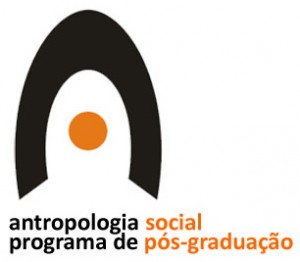Fruit in the Soil of Magic
Horticultural practices as socially conditioned techniques in the formation of Anthropogenic Amazonia
DOI:
https://doi.org/10.52426/rau.v1i2.11Palavras-chave:
indigenous inviromenment, horticulture, Amazonia, cosmologyResumo
This study aims to accentuate the effect of social realities that influence indigenous horticultural practices. The purpose of which is to help with the understanding of the formation of Amazonian Dark Earths (ADE’s), fertile anthropogenic soil patches that are widespread across Amazonia. A tentative operational chain is proposed, delineating the processes that go into the formation of a garden (swidden), using data collected on the Kayapó and Ka’apor Indians, in order to demonstrate that the choices of technique and technology involved in horticulture are socially conditioned. Combining pedological, biological and geographical approaches with anthropological ethnographies explaining indigenous cosmology helps to elucidate the processes that go into the creation of Amazonia as anthropogenic.
Referências
ÅRHEM, K. “The cosmic food web: human-nature relatedness in the Northwest Amazon.” In DESCOLA, P.; PÁLSSON, G. (eds.). Nature and Society: Anthropological Perspectives. London: Routledge, 1996, pp. 185-204.
ARROYO-KALIN, M. “Domestication in a changing landscape: anthropological and archaeological reflections on historical ecology and the emergence of Amazonian dark earths.” Paper presented at the Historical ecologies of tropical landscapes: new engagements between anthropologists and
archaeologists. ASA meeting. Bristol. 2009.
BALÉE, W. Footprints of the Forest Ka’apor ethnobotany – the historical ecology of plant utilization by an Amazonian People. New York: Columbia University Press, 1994.
ROOSEVELT, A.C. Moundbuilders of the Amazon: Geophysical archaeology on Marajo Island, Brazil. San Diego and London: Academic Press, 1991.
SANTOS-GRANERO, F. “Power and Ideology and the Ritual of Production in Lowland South America.” In Man, v. 21, n. 4, 1986, pp. 657- 679.
SCHAAN, D. “Into the Labyrinths of Marajoara Pottery: Status and Cultural Identity in Prehistoric Amazonia.” in McEWAN, C.; BARRETO, C.; NEVES, E. (eds.). Unknown Amazon: Culture in Nature in Ancient Brazil. London: The British Museum Press, 2001, pp.108-133.
SILVA, F.A. “Cultural Behaviours of Indigenous Populations and the Formation of the Archaeological Record in Amazonian Dark Earth: the Asurini Do Xingu Case Study.” In LEHMANN, J.; KERN, D.C.; GLASER, B.; WOODS, W.I. (eds.). Amazonian Dark Earths: Origin, Properties,
Management. Dordrecht, Boston, London: Kluwer Academic Publishers, 2003, pp. 372-386.
SMITH, N.J.H. “Anthrosols and Human Carrying Capacity in Amazonia.” Annals of the Association of American Geographers, v.70, n.4, 1980, pp.553-566.
SOMBROEK, W.; KERN, D.; RODRIGUES, T.; CRAVO, M.; CUNHA, T.J.F.; WOODS, W.; GLASER, B. Terra Preta and Terra Mulata: pre-Columbian Amazon kitchen middens and agricultural fields, their sustainability and their replication. Paper no. 1935, 17 World Congress of Soil Science, Bangkok, Thailand: 2002, pp. 1-9.
VIVEIROS DE CASTRO, E. “Images of nature and Society in Amazonian Ethnology.” Annual Review of Anthropology, v.25, 1996, pp. 179-200.
______. “Cosmological Deixis and Amerindian Perspectivism.” The Journal of the Royal Anthropological Institute, v. 4, n.3, 1998, pp. 469-488.
______. “Exchanging Perspectives. The Transformation of Objects into Subjects in Amerindian Ontologies.” Common Knowledge, 10(3), 2004, pp. 463- 484.
Downloads
Publicado
Como Citar
Edição
Seção
Licença
Copyright (c) 2021 Revista de Antropologia da UFSCar - R@U

Este trabalho está licenciado sob uma licença Creative Commons Attribution-ShareAlike 4.0 International License.





